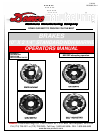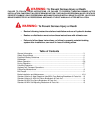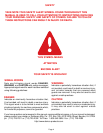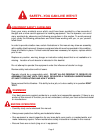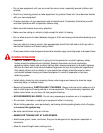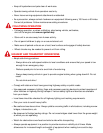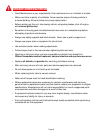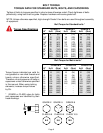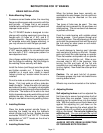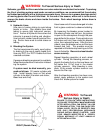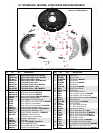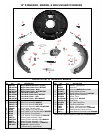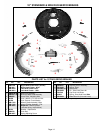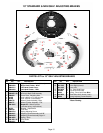
Page 7
HIGHWAY AND TRANSPORT OPERATIONS
• Adopt safe driving practices:
- Always drive at a safe speed relative to local conditions and ensure that your speed is low
enough for an emergency stop.
- Reduce speed prior to turns to avoid risk of overturning.
- Always keep towing vehicle in gear to provide engine braking when going downhill. Do not
coast.
- Do not drink and drive!
• Comply with state and local laws governing highway safety on public roads.
• Use approved accessory lighting, flags and necessary warning devices to protect operators of
other vehicles on highway during transport. Various safety lights and devices are available
from your dealer.
• Local laws should be checked for all highway lighting and marking requirements.
• Plan your route to avoid heavy traffic.
• Be a safe and courteous driver. Always yield to oncoming traffic in all situations, including narrow
bridges, intersections, etc.
• Be observant of bridge loading ratings. Do not cross bridges rated lower than the gross weight
at which you are operating.
• Watch for obstructions overhead and side to side while transporting.
• Always operate equipment in a position to provide maximum visibility at all times. Make
allowances for increased length and weight of equipment when making turns and/or stop.
FOLLOWING OPERATION
• Following operation, or when unhitching, stop towing vehicle, set brakes,
shut off the engine and remove ignition key.
• Store unit in an area away from human activity.
• Do not permit children to play on or around stored unit.
• Make sure all parked units are on a hard, level surface and engage all safety devices.
• Wheel chocks may be needed to prevent unit from rolling.
• Keep all bystanders and pets clear of work area.
• Operate towing vehicle from operators seat only.
• Never leave running equipment attachments unattended.
• As a precaution, always recheck hardware on equipment following every 100 hours or 50 miles.
Correct all problems. Follow maintenance safety procedures.



